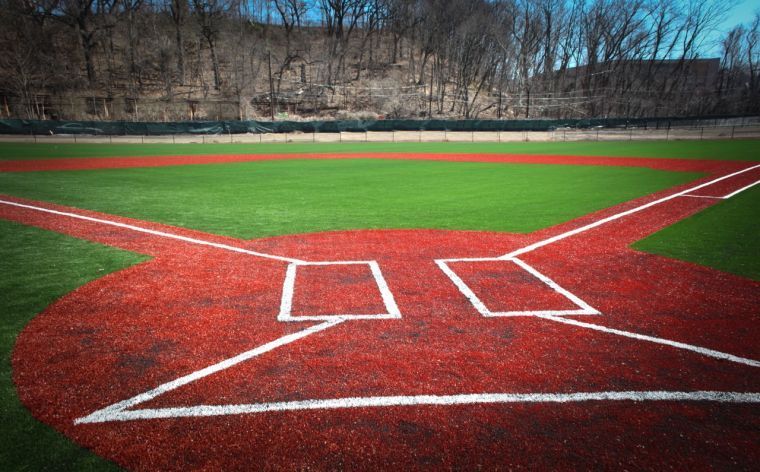A former state champion Manhasset lacrosse player is heading an investigation into the relationship between artificial turf fields and the various health problems suffered by the athletes who play on them.
Ariana Tadler, a partner at the Manhattan firm Milberg LLP who was inducted into the Manhasset Lacrosse Hall of Fame in 2008 for her exploits as a goalkeeper, is seeking athletes or the family members of athletes affected by the synthetic material known as “crumb rubber” to contribute to her research.
“My history as an athlete makes me particularly interested in protecting fellow athletes who may have been harmed by crumb rubber,” Tadler said in a statement.
“Crumb rubber” is made from ground-up old tires and is combined with plastic grass to make most modern artificial turf surfaces.
But according to the state Department of Environmental Conservation, there is concern that chemicals used in the production of such fields — including zinc, sulfur, black carbon and oils containing polycyclic aromatic hydrocarbons, among others — may be released into the air, albeit at low concentrations.
Many athletes have come forward in recent years linking rare forms of cancer they have developed to their exposure to artificial turf, and lawmakers have called for a comprehensive study into the potential health hazards associated with “crumb rubber.”
“There is no issue more important to me than my constituents’ safety. It is common sense to fully investigate any materials that may possess a serious health risk to our community,” U.S. Rep. Steve Israel (D-Huntington) said at a news conference in January at a playground at the Sid Jacobson Jewish Community Center in East Hills whose surface was made entirely from tire crumb.
Approximately 11,000 playground and athletic fields in North America were made using artificial turf, according to figures provided by Israel’s office.
An October 2014 NBC News investigation “was unable to find any agreement over whether crumb turf had ill effects on young athletes, or even whether the product had been scientifically tested.”
But University of Washington women’s soccer associate coach Amy Griffin told NBC she knew of at least 38 soccer players, 34 of them goalies and at least a dozen coming from the Washington state area, who had been diagnosed with blood cancers like lymphoma and leukemia.
“I’ve coached for 26, 27 years,” she told NBC. “My first 15 years, I never heard anything about this. All of a sudden it seems to be a stream of kids.”
Several athletic fields across the North Shore utilize artificial turf in some capacity, including those at North Hempstead Beach Park in Port Washington, football fields at Manhasset and Roslyn high schools and at Manhasset Valley Park, which was reopened in 2013 after an extensive renovation that included the installation of turf to its baseball and multi-purpose fields.
Work began last summer to install synthetic turf fields at each of the Sewanhaka School District’s five high schools, as part of an $86.6 million capital bond approved that spring.
District officials have said turf surfaces would allow for multiple athletic events to be played in a single day with minimal field maintenance.
More recently, the issue of whether to install artificial turf has proved contentious in Great Neck, where a renovation plan for Memorial Field’s baseball diamond has been disputed with residents concerned about turf’s long-term health impact.
Approved as part of a $6.5 million Great Neck Park District bond by the Town of North Hempstead in 2013, the turf plan is still under consideration by the park district’s commissioners, who in late August broke the project into two phases to prolong its analysis of natural grass and turf.
The Great Neck Breast Cancer Coalition has come out against a turfed Memorial Field, issuing a letter to the park district in March that said: “While some claim the fields are safe, any health effects of exposure to these chemicals — endocrine disruption, neurological impairment and cancer — may take decades to develop.”
Robert Lincoln, the park district’s board chairman, told Blank Slate Media Thursday that the first phase of work would include the construction of a new backstop, dugout, viewing area and outfield wall.
The district plans to award the bid in October and decide on whether to sod the surface with natural grass or lay artificial turf — or a combination of the two — by the time the first phase is expected for completion in the early spring, Lincoln added.
“If you really want the artificial turf, you don’t think it’s dangerous, and if you’re against it then you think you’re going to die and that’s it,” said Robert Lincoln, the park district’s board chairman. “The reports are all over the place, but the disturbing thing about all this is that none of the agencies at the state or federal level have come out and taken a stand.”



